How to trace Jewish ancestors and find their family records
4-5 minute read
By The Findmypast Team | April 3, 2020
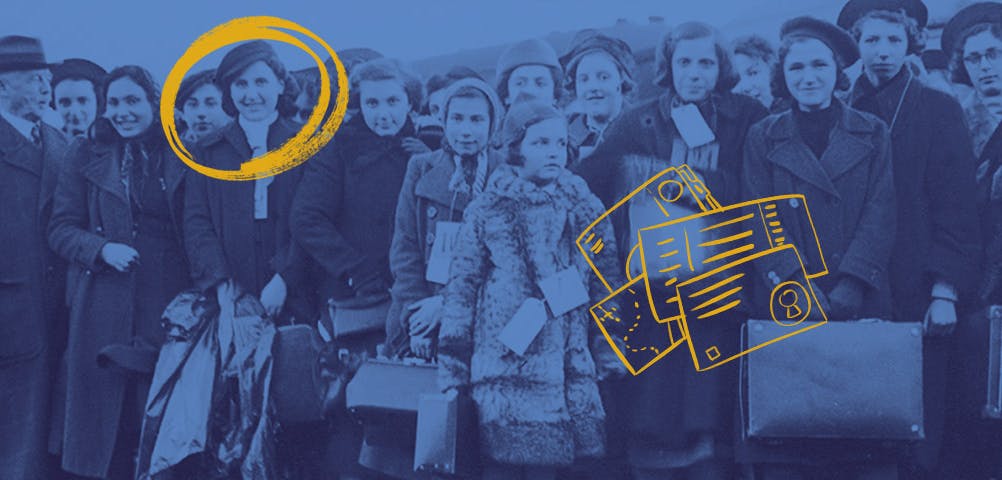
Do you have Jewish ancestry? Findmypast can help you uncover a rich tapestry of Jewish history, heritage and culture in our detailed family records.
Spanning more than 8,000 years, Jewish history can be traced all the way back to biblical times, although we'd be highly impressed if you manage to get your family tree back that far.
Before you start tracing Jewish family roots, it's worthwhile learning more about the history of the Jews.
A brief overview of Jewish history
Jewish people have a turbulent history. They were taken into captivity by the Babylonians in the 6th century, lived under Roman occupation from 630 BCE to 324 CE, endured the Crusades and survived the unsettled Mamluk period.
From the 1880s to the early 20th century, massive pogroms and harsh laws in Eastern Europe, once home to around 30% of the world's Jews, caused millions to flee to the United States and Britain. Then, during the middle of the 20th century, Adolf Hitler set out to systematically annihilate the ethnic Jews of Europe, triggering a horrific series of events that would dramatically impact the Jewish population as well as the rest of the world.
Despite this troubled and sometimes tragic history, the Jewish people have had a hugely positive influence in the fields of science, culture and economy. When exploring your Jewish roots, you are likely to discover that many bright moments in Jewish history have left a lasting mark on society.
5 quick tips for finding Jewish ancestors
We've put together a few hints and tips to help you unlock your Jewish ancestry and get the most out of our Jewish family records.
1. Get talking
The best way to start investigating your family's Jewish origins is to find out as much as you can from living relatives. Family members may know far more than you realise. Here are 30 useful questions you can ask them.
2. Search census records
Censuses are particularly useful as they not only provide you with names and relationships, but also ages, places of birth, occupations and years of immigration.
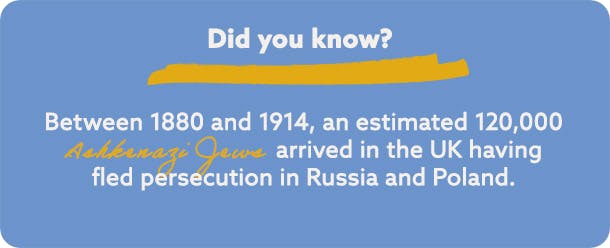
Try finding your Jewish ancestors in the 1911 Census. It should help you trace the family's movements right back to their arrival in the UK.
3. Look into their jobs
Jewish people have a strong tradition of working in the garment trade. Large numbers of Jews also worked as tobacconists, cabinet makers, shopkeepers and merchants in international trade and export. As census records list occupations, they're the best place to start looking. Watch out for Jews whose occupation was recorded as 'journeyman'. This often indicated their migrant status.
4. Investigate Jewish family names
Historically, many Jews felt under pressure to assimilate into society and did so at the cost of their cultural identity by anglicizing their family names. It may be possible to make an educated guess as to your family's original Jewish name, as most immigrants chose surnames that either alluded to their tribal identities, sounded similar to original spellings, or were simply shortened versions.
It's also worth remembering that many immigrants had their names changed upon arrival into their new country. This can make finding original names a challenge. Travel and migration records are a sensible place to start your search.
5. Track settlement trends
The majority of Jewish immigrants lived in large cities and, like other ethnic groups, developed communities in certain areas. For example, in London, Jews lived primarily in the East End, which became known as a Jewish neighbourhood. Jewish communities generally embraced assimilation into the wider culture of their new home.
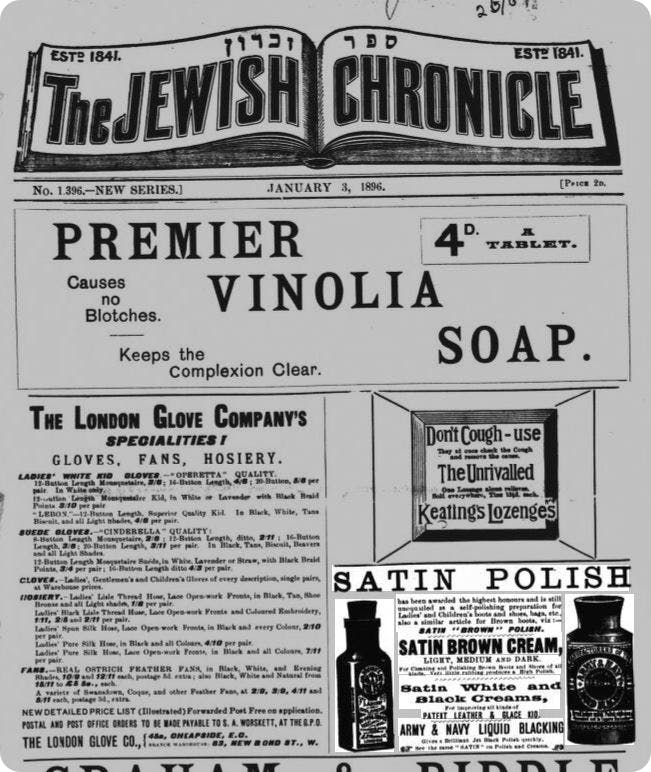
The Jewish Chronicle newspaper
As the new arrivals settled in, Yiddish and Hebrew newspapers were formed which can be useful resources to search for your family.
Jewish family records
As well as those already mentioned, Findmypast has a host of resources that can help you discover more about your Jewish ancestry.
Kindertransport
Our Kindertransport records are digitised, searchable copies of UK government files relating to the thousands of young Jewish refugees that were sent to Britain to escape Nazi persecution during the Second World War. They can reveal vital information on your Jewish ancestors and offer a unique glimpse into an incredible feat of humanity in the face of unspeakable brutality.
British Jewry Book of Honour 1914-1920
This unique publication contains nearly 57,000 colour images and transcripts. It was published in 1922 to record and honour the contribution made by Jews who served in the British and colonial forces during the First World War. The book describes Jewish enlistment, casualties, military honours, Jewish Units and the work of Jewish hospitals, institutions and agencies.
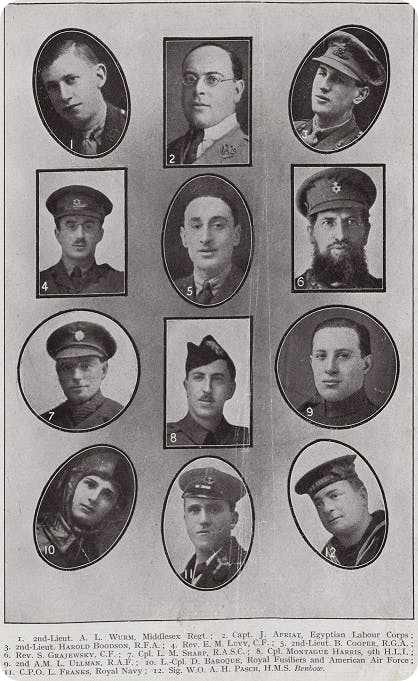
Find a photo of your ancestor in the British Jewry Book of Honour.
Importantly, it also contains alphabetical lists of those killed in action, those who were awarded military honours and indexed photographs of many of these individuals.
Palestine Conflict British Deaths 1945-1948
These poignant records cover the tensions between Jewish militant underground organisations and the British authorities in Palestine in the aftermath of the Second World War, that lasted until the establishment of the state of Israel in 1948. While these records document British deaths, they provide a stark reminder of the horrendous acts of violence were committed by both sides.
Greater London Marriage Index
This collection includes thousands of Jewish marriages from Bevis Marks and the Great Synagogues.
The records can provide essential details for your family tree including names and addresses of the betrothed, their occupations and witnesses names.
Manchester Naturalisation Society 1896-1909
If your Jewish ancestor settled in Manchester, try searching these facsinating records for more information on them.
What have you discovered about your Jewish past and how has it changed you? We'd love to hear from you on Facebook, Instagram or Twitter. Reach out to us using #WhereWillYourPastTakeYou?
Related articles recommended for you

These are the nation’s favourite war stories – and the real history behind them
History Hub

Explore memorial inscriptions and so much more
What's New?
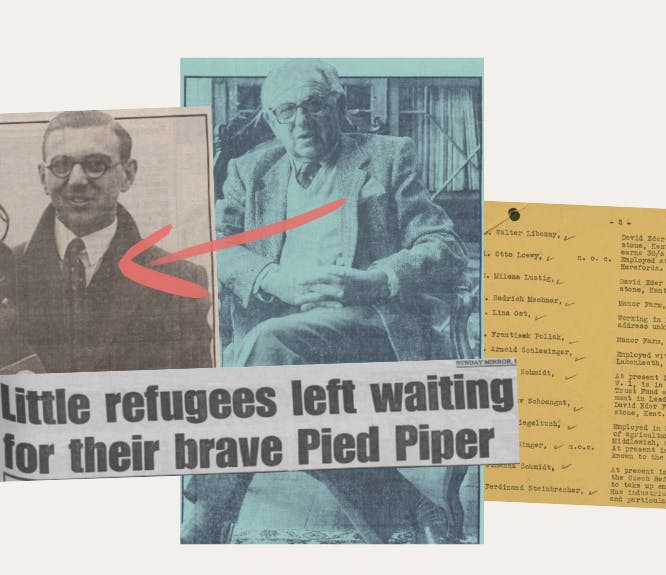
The remarkable true story of the man who saved 669 children from the Nazis
History Hub

